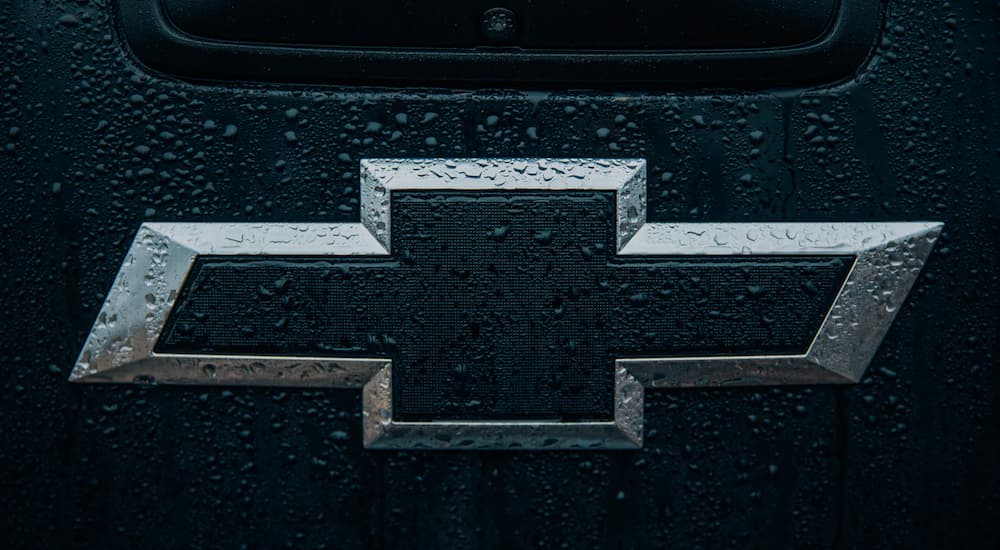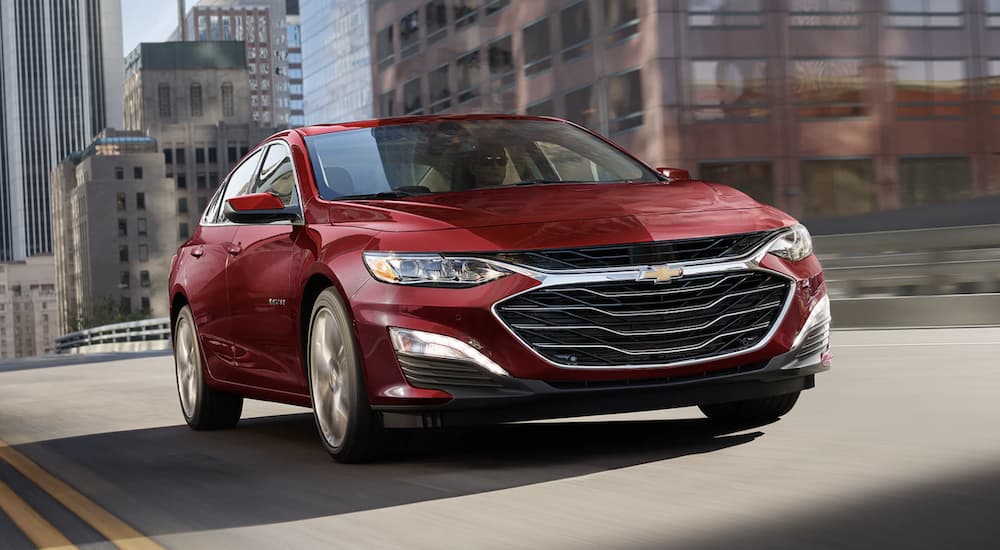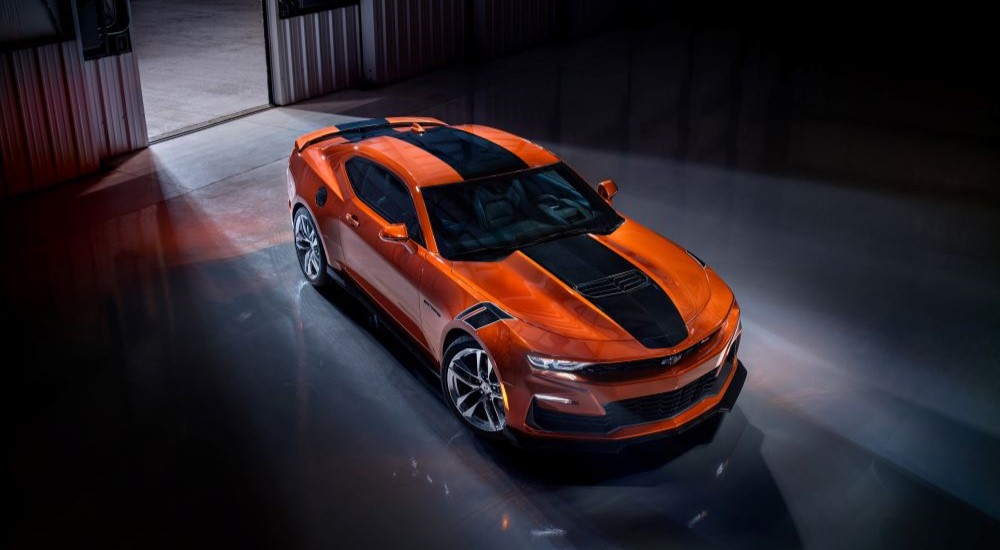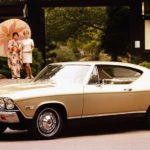Chevy is a brand that has been around for over 100+ years and made a name for itself thanks to its first-class engines and unforgettable models like the Corvette, Silverado, and Impala. From practical to flashy, Chevrolet is a brand that has been everywhere and done everything. But whether you’re looking for a Chevy Malibu for sale or you’re thinking about getting into a popular Silverado truck, you might be interested to learn that despite its iconic name and image, there are still a few surprising facts about Chevy that you don’t know. For example, despite its ultra popularity nowadays, Chevy was once considered the cheapest offshoot of GM brands, coming in last even behind bargain names like Pontiac? Yet, while Chevy has kept going slow and steady other brands seem to have fallen to the back of the pack.
Chevy got its start in Detroit in 1911, marketing its first model in 1912, which sold for $2,150, a small amount of money by today’s car buying standards but fairly high for the time period. Chevy rapidly grew, adopting its iconic “bowtie” emblem by 1914. By 1917 it had introduced its first V8 engine. 1918 marked a large change when Chevrolet merged with GM. By 1923 the president of GM vowed that the company was going to produce “a car for every purse and purpose.” A statement that holds true even today.
Since then, Chevy has been a brand known to roll with the punches and tackle whatever changes happen within the market. They are known for producing some of the most reliable sedans and hard-working trucks. So what else is there to know? We were curious, so we decided to jump in and investigate the world-famous brand to find out its secrets, facts, and some interesting trivia that might not be so well known. What did we find out? Enough to say that Chevy is more than a great vehicle; it’s an interesting, diverse brand that, no matter how well you think you know it, it’ll always keep you guessing.
The Malibu Birth and Resurrection
The Chevy Malibu is one of the automaker’s most popular selling sedans. It’s been on the market since the 1960s and has since acquired a cult following. While the Malibu today is known as a dependable, safe car for commuters and families, it hasn’t always been so subtle in its ways. Check out blockbusters like 2011’s Drive to see a 1973 Malibu in action. Or go back even further to 1994 to feast your eyes on the cherry red eye-poppin’ 1964 Malibu featured in Quentin Tarintino’s cult hit Pulp Fiction.
There’s no doubt the Malibu has had quite a ride over the decades. Yet one thing you might not know about the current understated sedan was that, similar to how Chevy’s best-selling Silverado came from the C/K, the Malibu started life as a trim for the Chevelle. From 1964-1967 the midsize sedan was offered as the Chevrolet Chevelle Malibu SS or Malibu Super Sport. The nameplate “Malibu” was later resurrected by Chevy and offered as a separate model in 1978. It was only after five years on the market that the Malibu was discontinued, only to be brought back to life in 1997, resembling the practical no-fuss sedan that we are more familiar with today.
What Is With Chevy’s Famous Bowtie Emblem?
Chevy’s bowtie-shaped emblem is instantly recognizable across the globe. It’s been featured on Chevy vehicles since 1914. So what is it exactly? Where did the design come from? Does it have a deeper meaning? As a Chevy driver or enthusiast, you can’t help but wonder about the origin of the famous Chevy bowtie. The debate has been going on for a while, with conflicting accounts about how the logo came into being.
The first account suggests that one of Chevy’s founders, William Durant, was an enthusiastic traveler. He noticed the shape on the wallpaper of his French hotel room. Legend says that he took a piece of the wallpaper home with him and showed it to his partners, who all decided it was a great shape for a car logo.
The second story comes from Durant’s daughter, who claimed that her father was an avid doodler and that he drew the design one evening during dinner. That sounds plausible enough, and yet there is still another story, this one from Durent’s wife who claimed she and her husband were vacationing in 1912 when he saw a similar-looking logo for a coal company in the local newspaper.
Yet another rumor is that the bowtie shape is a version of the cross found on the Swiss flag. This also could be valid considering Chevy’s other founder Louis Chevrolet, was born in Switzerland in 1878. Either way, the first official use of the Bowtie emblem was used by Chevy in 1914, and a version of that design has been in use ever since. It is a shape that has become synonymous with quality and reliability.
The First SUV
Chevy is often credited with creating what we know today as an SUV. While the term SUV used to indicate a four-wheel drive vehicle that’s more a truck than a sedan, the designation has become as flexible as the vehicle itself, and the body style covers a wide range of styles, builds, and capabilities. An SUV can be a grocery-getter, a family hauler, an adventure vehicle, or a daily commuter. So who made the first SUV? That honor is normally accredited to Chevy (no surprise there).
Chevy introduced the Suburban to the world in 1935. Back then, it resembled more of a rugged station wagon than a modern-day SUV. The Suburban was created to carry equipment or multiple people at one time and was considered more of a commercial vehicle than a family one. However, after the war, that changed with the wagon-like Suburban becoming popular with suburban families who realized its usefulness and appreciated its flexibility when it came to hauling people plus daily essentials, school work, sports gear, and more.
The 1935 Suburban Carryall was the first vehicle capable of carrying up to eight passengers. Its steel frame was available with two, three, or four doors. In the 1950s, Chevy upgraded the SUV’s engine to a V8. By the 1970s, the Suburban had completed its modern transformation, being offered with four doors and four-wheel drive.
What’s In a Name?
Ever wonder about car names and what they mean or where they come from? It’s easy to imagine where Chevy got names like the Impala (named after an African antelope) or the Silverado (a blend of Silver and the mythical city of El Dorado). Usually, names make sense, and we can nod our heads and think, okay, I get it, but one we didn’t quite understand is the Camaro.
The word “camaro” can mean several different things depending on the language that you speak. Look to French to learn that the word camaro can mean either “friend” or “comrade,” or if you’re a Spanish speaker, you know that camaro can also mean “shrimp.” hm. Neither of these names invokes the speedy Camaro sports car that we’re all familiar with. So what’s going on with its name?
While rumors swirled for years over the origins of the Camaro’s name, Chevy finally gave us peace of mind, clarifying that Camaro was, in fact, neither of these words and is “a small, vicious animal that eats Mustangs.” Clearly, Chevy just wanted something that could take down one of the first muscle cars, the Ford Mustang, and the Camaro name stuck. A bonus fun fact, before the Camaro was released, it was referred to by the codename “Panther.”
Chevy Keeps Customers Guessing
With a company as old and forward-thinking as Chevy, there were more than a few interesting bits of trivia to be learned. However, we’ve just begun to scratch the surface of the 100+-year-old automotive company; we’re sure that there’s lots more to learn. Why do we know this? Because Chevy has made a name for itself when it comes to keeping drivers engaged and interested. It tailors its vehicles for drivers’ needs and not the other way around, all the while adding clever new features or unique twists on classic designs to create something that is new and modern yet still familiar to drivers worldwide. Chevy is a company that keeps the competition guessing at every turn without alienating its drivers.
While these Chevy facts are interesting, drivers searching for a new vehicle might be more interested in what makes a Chevy a Chevy, like engineering, power, performance, and durability, just to name a few. If you’re looking to get into one of Chevy’s iconic SUVs, sedans, or best-selling trucks, then you’re on the right road. Get behind the wheel for yourself and discover what truly makes a Chevy worth knowing.






